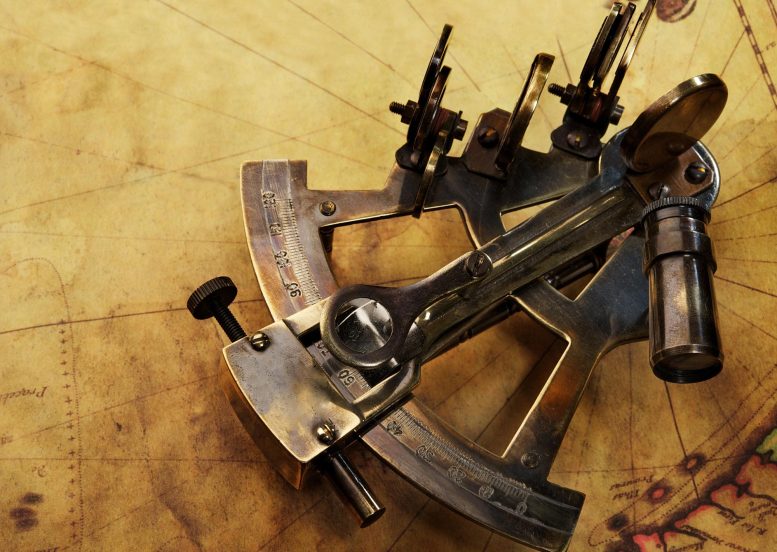
Galaxy NGC 3156 captured by the Hubble Space Telescope. Credit: ESA/Hubble & NASA, R. Sharples, S. Kaviraj, W. Keel
This dream-like Hubble Space Telescope Picture of the Week features the galaxy known as NGC 3156. It is a lenticular galaxy, meaning that it falls somewhere between an elliptical and a spiral galaxy. It lies about 73 million light-years from Earth, in the minor equatorial constellation Sextans.
The Historical Significance of Sextans
Sextans is a small constellation that belongs to the Hercules family of constellations. It itself is a constellation with an astronomical theme, being named for the instrument known as the sextant. Sextants are often thought of as navigational instruments that were invented in the 18th century. However, the sextant as an astronomical tool has been around for much longer than that: Islamic scholars developed astronomical sextants many hundreds of years earlier in order to measure angles in the sky.

The Ulugh Beg Observatory in Samarkand, Uzbekistan. Built by the Timurid astronomer Ulugh Beg. Credit: ESA
A particularly striking example is the enormous sextant with a radius of 36 meters that was developed by Ulugh Beg of the Timurid dynasty in the fifteenth century, located in Samarkand in present-day Uzbekistan. These early sextants may have been a development of the quadrant, a measuring device proposed by Ptolemy. A sextant, as the name suggests, is shaped like one-sixth of a circle, approximately the shape of the constellation.
Modern Astronomy and NGC 3156
Sextants are no longer in use in modern astronomy, having been replaced by instruments that are capable of measuring the positions of stars and astronomical objects much more accurately and precisely. NGC 3156 has been studied in many ways other than determining its precise position — from its cohort of globular clusters, to its relatively recent star formation, to the stars that are being destroyed by the supermassive black hole at its center.

A sextant is a navigational instrument used to measure the angle between a celestial object and the horizon, aiding in determining one’s latitude during marine and aerial navigation.
More About Sextants
A sextant is a navigational instrument used primarily to measure the angle between a celestial object and the horizon, aiding in marine and aerial navigation. This precision tool, which is shaped like one-sixth of a circle, utilizes a small telescope and reflective mirrors. By observing the altitude of stars, the sun, or the moon, mariners and aviators can determine their latitude, and sometimes their longitude, with respect to the Earth’s surface. Historically, the sextant has been instrumental for explorers and navigators, enabling them to chart their courses accurately over vast, unmarked expanses of ocean or air.









Be the first to comment on "Stellar Sextants: Charting the Course of Celestial Bodies"